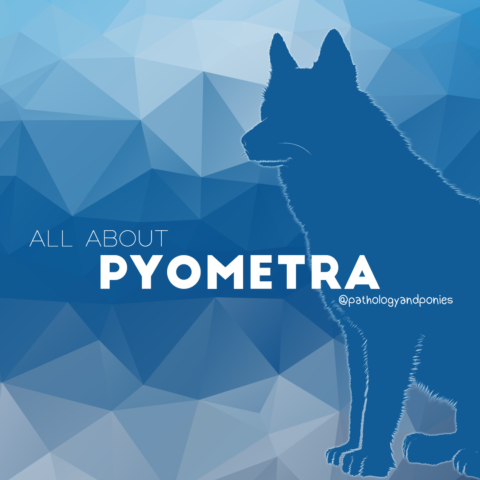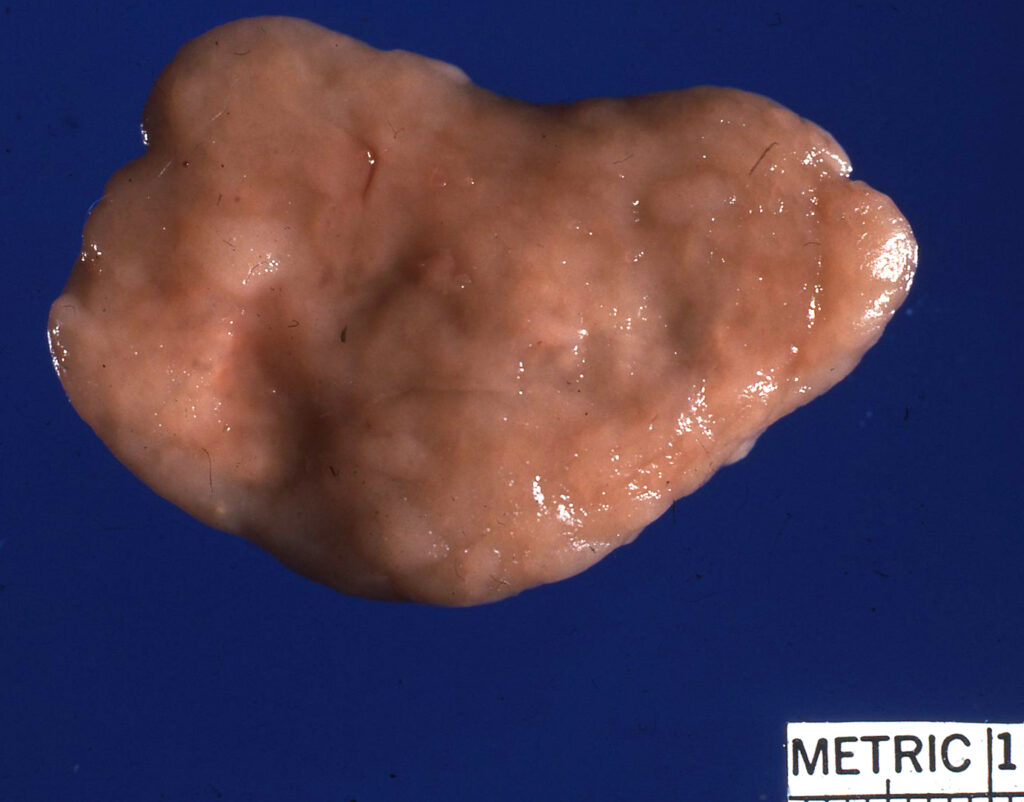
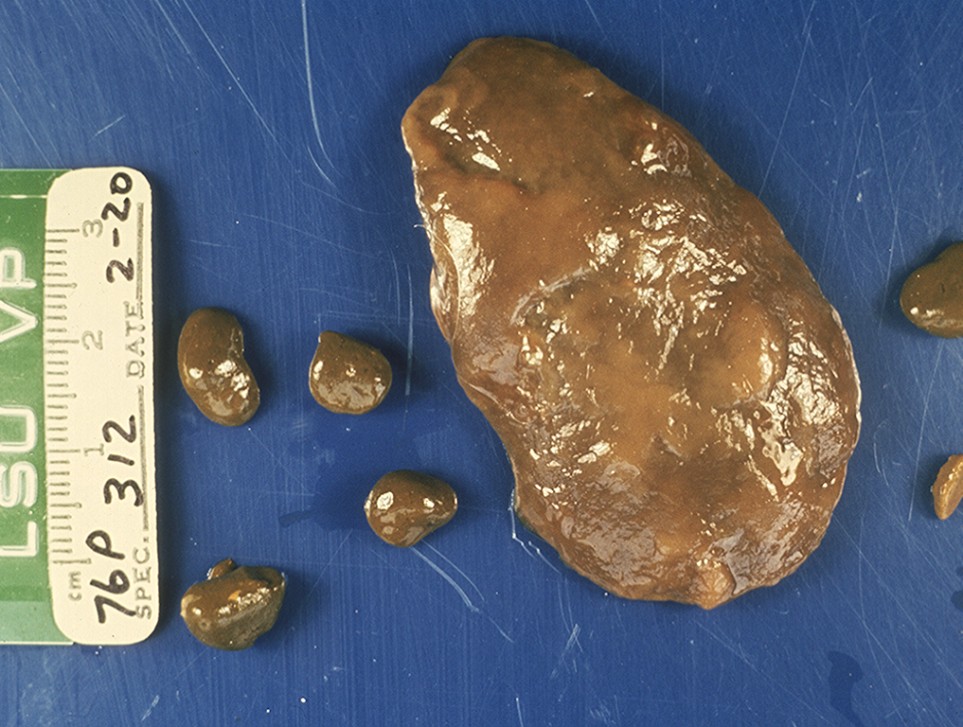
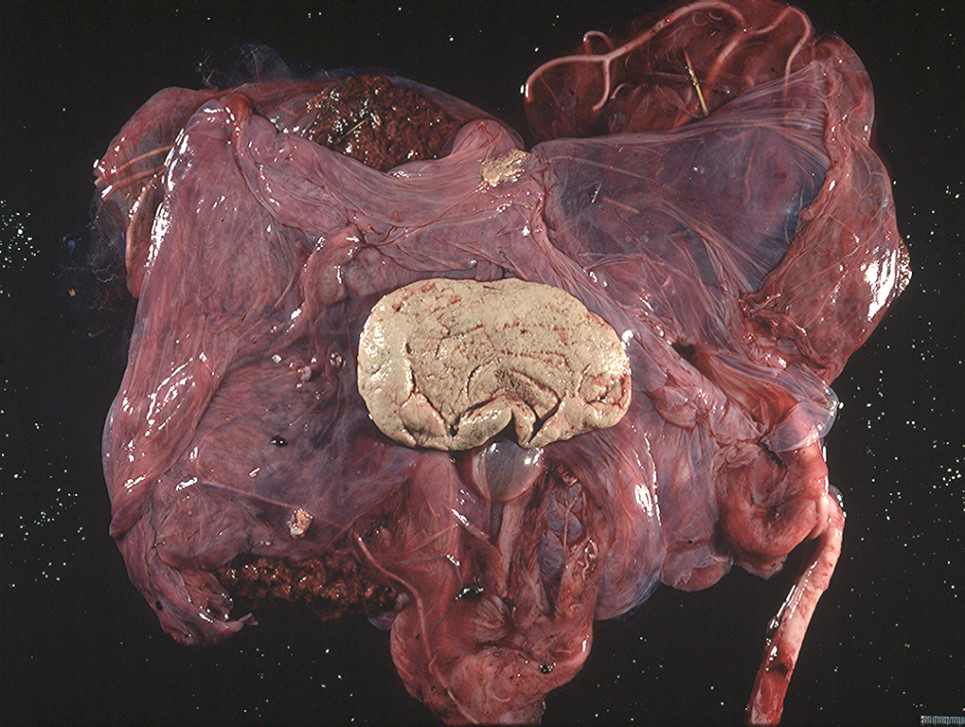
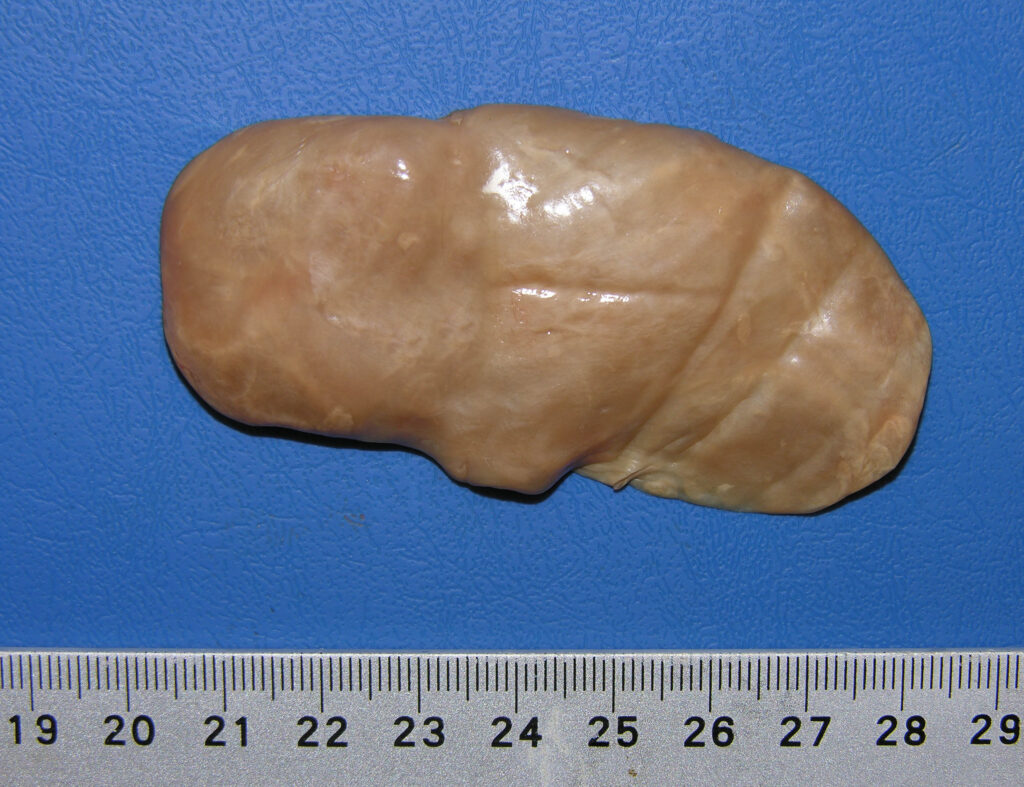
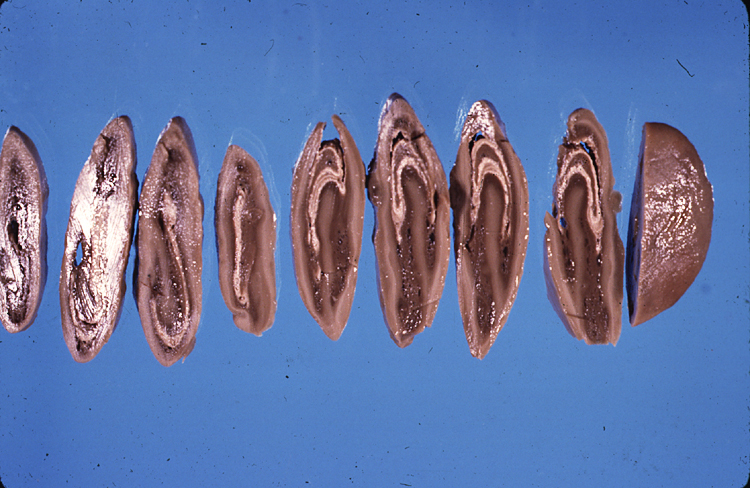
Today’s path rounds are on 𝐡𝐢𝐩𝐩𝐨𝐦𝐚𝐧𝐞𝐬!
𝐖𝐡𝐚𝐭 𝐢𝐬 𝐢𝐭?
𝐇𝐢𝐩𝐩𝐨𝐦𝐚𝐧𝐞𝐬 are aggregates of the nutrient fluid found within the placenta that are a 𝐧𝐨𝐫𝐦𝐚𝐥 𝐟𝐢𝐧𝐝𝐢𝐧𝐠 in many species. However, they look kind of weird, and can scare producers if they aren’t aware of them!
𝐖𝐡𝐨 𝐠𝐞𝐭𝐬 𝐢𝐭?
We most commonly see these in horses, however we can also see them in other species.
𝐖𝐡𝐲 𝐢𝐬 𝐢𝐭 𝐜𝐚𝐥𝐥𝐞𝐝 𝐚 𝐡𝐢𝐩𝐩𝐨𝐦𝐚𝐧𝐞?
The name “hippomane” means 𝐡𝐨𝐫𝐬𝐞 𝐦𝐚𝐝𝐧𝐞𝐬𝐬, and was first described by Aristotle around 350 BC. So we’ve been finding these strange beings in horse placentas for a long time! They were called “horse madness” because it was believed that if you could get the hippomane before the mare ate it, the smell of the hippomane would send the mare into a frantic state. Thus, people thought that hippomanes had magical and even aphrodisiac properties, and they were somewhat valuable to potion makers and physicians at the time.
Based on this naming scheme, in cattle, they are called “bovomanes”. Similarly, in 𝐜𝐚𝐦𝐞𝐥𝐢𝐝𝐬 (llamas, camels and alpacas) they are called “camelomanes” and in sheep they are called “ovomanes”. Very silly!
𝐖𝐡𝐚𝐭 𝐜𝐚𝐮𝐬𝐞𝐬 𝐢𝐭?
As mentioned, these hippomanes are thought to be aggregates of the nutrient-dense fluid found within the placenta. It is thought that this process begins when some of the 𝐞𝐩𝐢𝐭𝐡𝐞𝐥𝐢𝐚𝐥 𝐜𝐞𝐥𝐥𝐬 (the cells lining the placenta) shed into the fluid. This provides a solid structure that mucus and nutrients adhere to, forming a layer. Over time, more mucus and nutrients continue to adhere, forming multiple layers like tree rings. By the time the animal is born, there is a large, green-brown or tan mass of nutrients, mucus and epithelial cells within the placenta! If you cut it in half, you can actually see the “tree rings” showing how the hippomane grew in size.
𝐏𝐡𝐨𝐭𝐨𝐬
1-5) Hippomanes!
𝐒𝐨𝐮𝐫𝐜𝐞𝐬
King JM. The origin and development of the hippomanes in the horse and zebra. J Anat 1967; 101(2):277-284.
Photos 1-5 © Noah’s Arkive contributors King, Jakowski, McCracken, Rech, Crowell licensed under CC BY-SA 4.0.




